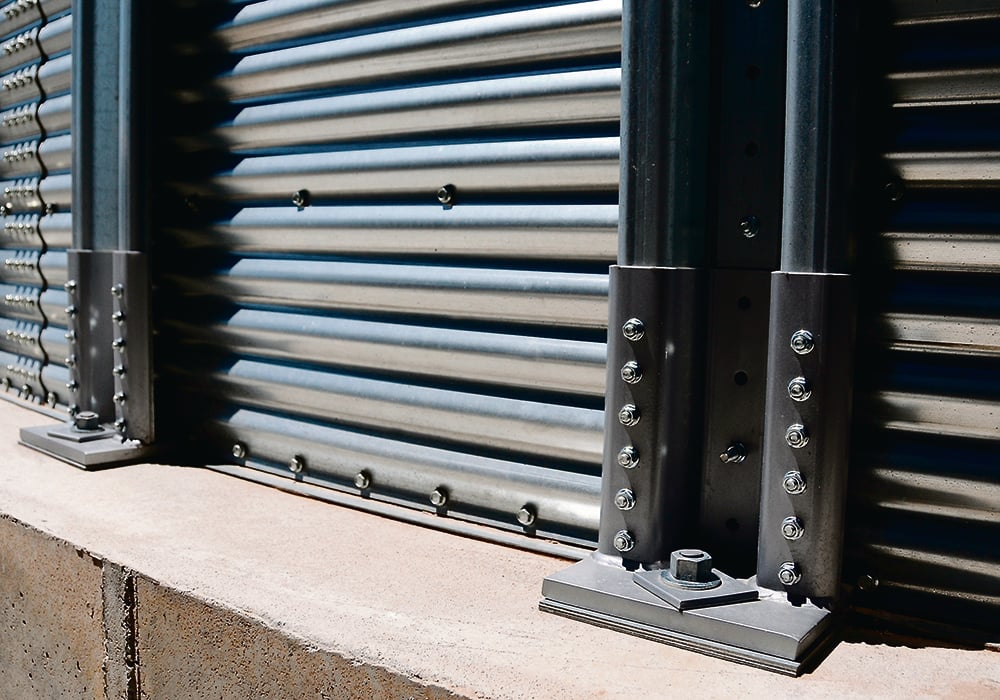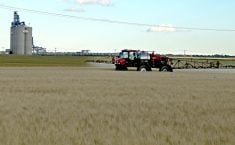On a typical farm, a big corrugated bin might see one or two turns annually. The same bin at the local elevator might see more turns on a daily basis.
Bin longevity is tied to the total number of cycles, according to Gary Woodruff, grain storage specialist for GSI.
“Most farms cycle their bins once a year, so cycles will not be the reason for the bin to be taken out of use,” said Woodruff in an email interview.
“The Number 1 reason bins are replaced is they were sized too small to begin with. Or, if you keep a bin long enough it will eventually corrode, but that takes 50 years. When cycles are high on a commercial site or large farm, and if the engineering didn’t account for those high cycle numbers, it could lead to a safety hazard.
Read Also

House ag committee to undertake several studies
The House of Commons standing agriculture committee has set its agenda for the coming months. Members began the fall sitting with a two-hour update on international trade
“There’s a difference between a farm bin, which sees at most 10 to 15 cycles per year and one at an elevator that gets cycled every day. That number of cycles would take special consideration with a much heavier design.”
Another consideration is two different corrugations. The tighter one is 2.66 inches and the sheets are 32 inches tall. The more open one is four inches and the sheets are 44 inches tall.
Both have the same measurement from the inside to outside of the sheet. The four-inch has a vertical strength advantage due to the taller sheets. But this is not as much of a factor as the stiffeners themselves and the overall structural engineering.
Rings of sheets are always heaviest at the bottom and become lighter as they rise in height.. The four-inch sheets carry the seam one foot higher each time through three or four rings.
Traditionally non-stiffened bins were used on farms. Older small commercial sites also used non-stiffened bins. As bins got larger, inside stiffeners became more popular to gain additional height economically without changing the appearance of the smooth bin outside wall. Appearance was a factor for many customers.
A problem with internal stiffeners is they provide places for insects and out of condition grain, both of which create problems.
In the 1970s, stiffeners started to be put on the outside to eliminate issues on the inside. As more bins had outside stiffeners, their appearance became more acceptable.
A bin wall needs two types of strength. It has to overcome the hoop tension from the grain itself, and it has to support the vertical forces, such as the roof weight and weather conditions.
Up to an eave height of about 40 feet, sidewall sheets required to hold hoop tension are adequate to hold vertical loads. At higher than 40 feet, the strongest and the most economical construction is to change the design so wall sheets take care of hoop tension and stiffeners sustain vertical loads.
However, stiffened bins can also be stronger and more economical at shorter eave heights. Anytime a bin is loaded repeatedly, there is more wear and tear. Stiffeners improve the usable life of the bin. Wet grain puts more stress on the bin wall.
Drying bins and wet bins see the highest cycle rate on a farm, so a stiffened tank has an advantage. Natural or low temperature drying puts more vertical load on the sidewall, so it’s always recommended to use a stiffened bin to prevent sidewall failure.
The foundation for a stiffened bin has to be larger in diameter to accommodate the base stiffener boot. The amount of concrete will be slightly higher.
Many people think the centre of the bin has the most grain depth so it needs the thickest concrete to support the weight. The thought is that the outside footer is there to prevent frost heaving.
However, as grain piles higher, more of the weight is transferred by friction to the bin wall and then delivered down the wall structure to the outside of the foundation. The stem wall depth should prevent frost heaving. The wider footer under the stem wall is to take the weight that the sidewall delivers.
Foundations must be correctly designed for the ground capability. If not, the concrete will not outlive the bin. With today’s large bins it’s critical that soil sampling be done and that the installation is properly engineered.
Stiffeners are sometimes added to an existing bin that’s been converted to handle drying, wet grain or the addition of high cycles that did not occur before. There has to be enough concrete for the stiffener to rest, to deliver the weight to the foundation.
It’s best to run the stiffeners all the way to the eave at top of the sidewall. Going partway up creates a weak area at the top that can be a safety issue later, said Woodruff.
“We still sell a significant number of unstiffened bins. Stiffened bins have gained steadily on the percentage through the years. Most purchases of non-stiffened bins are going to sites where all the older bins are also non-stiffened. This new bin is no taller than 15-2.66 inch rings or 10-4 inch rings.”


















